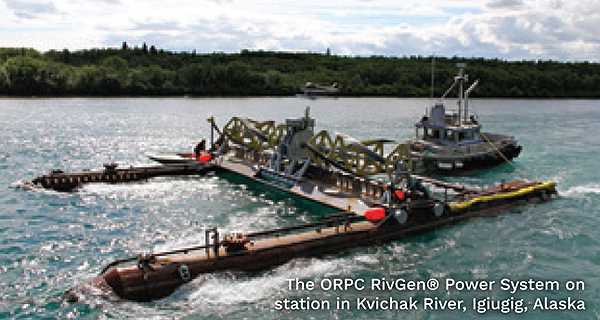On November 1st, 2018 the TAOIDE Project entered the final year of its 3-year duration and this signals the beginning of the all-important test phase of the Project. The overarching goal of the project is to develop a novel ‘wet gap’ electrical generator powered by a Marine Hydrokinetic (MHK) turbine that performs in the hostile deployed environment with a high degree of reliability and availability.

Over the first two years of the project a detailed design of the 'wet gap' generator was developed for MHK developer, ORPC, and the designed machine is currently being built by their chosen manufacturer, IKM Elektro in Norway. Other important contributions developed during this first phase were the bearing and seal systems for both the generator and driveline by project partner, SKF and the predictive maintenance procedures and operating protocols of the entire system developed by Letterkenny IT (LYIT). A suite of algorithms to control the torque, speed and power of the generator has been developed by project partner, Fraunhofer IEE. Researchers from MaREI, the Centre for Marine and Renewable Energy at University College Cork (UCC) have undertaken the development of the power electronics to control the variable voltage, variable frequency output from the 'wet-gap' generator to enable grid connectivity and optimised performance.
The test phase involves the operation of elements of the generator system under lab conditions in two test programmes. The first will be a test of the subsystems. This will involve the testing of the SKF developed SIMPLEX© seals and an ORPC developed PCD (Polycrystalline Diamond) bearing, both mounted on the test driveline. Preparations for subsystem testing are well underway with the programme to commence in December at UCC. The learnings from the subsystem testing will inform system improvements before the second round of testing which will involve a rigorous programme of running the 'wet gap' generator itself. This lab testing will commence in the Spring of 2019 and will continue to project end in October. The test data gathered will be validated against field data gathered from a deployment of the same design of generator by ORPC in Alaska later in the year.
The innovative 'wet-gap' generator system developed during the project will be the first of its kind for a Marine Renewable Energy (MRE) device. Once successfully proven, it is believed that the generator would be highly suited for use with other MRE systems. By developing a common architecture system, developers can focus on enhancing performance of their prime mover. The acceptance of a common platform will result in a reduction of risk and should present cost advantages due to economies of scale. Reduction in capital costs and adoption of high reliability components will reduce overall life cycle costs of MRE projects and should accelerate commercialisation of the technology. Lower cost systems will allow lower intensity resource sites to be considered as commercially viable, and so will expand the available market for MRE.
To be able to provide reliable electrical generation within a marine environment it is crucial to develop a generator that can withstand water intrusion. By designing and developing a 'wet-gap' generator capable of continuous operation in a fully-flooded condition, the TAOIDE project is striving to fulfil this current gap in the market.

More information:
The H2020 TAOIDE project is co-ordinated by the MaREI centre at UCC. For more information, please visit www.TAOIDE.eu and http://www.marei.ie/
This project has received funding from the European Union's H2020 research and innovation programme under grant agreement number 727465